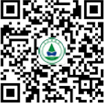Precipitation, solar radiation, and their interaction modify leaf hydraulic efficiency-safety trade-off across angiosperms at the global scale
| 論文作者 | Yi Jin1,2 , QingYe1 , XiaorongLiu3 , HuiLiu1,2 , SeanM.Gleason4 , PengchengHe1 ,Xingyun Liang1 and GuilinWu5 |
| 刊物 | New Phytologist |
| 標(biāo)識(shí)符 | 10.1111/nph.20213 |
| 摘要 | ? In theory, there is a trade-off between hydraulic efficiency and safety. However, the strength and direction of this trade-off at the leaf level are not consistent across studies, and habitat climate may impact this trade-off. ? We compiled a leaf hydraulic efficiency and safety dataset for 362 species from 81 sites world-wide, with 280 paired observations of both traits, and tested whether climate was asso- ciated with departure from the proposed trade-off. ? The leaf hydraulic efficiency–safety trade-off was weak (R2 = 0.144) at the global scale. Mean annual precipitation and solar radiation (SR) modified the trade-off. Species from dry and high SR habitats (e.g. desert and tropical savanna) were generally located above the trade-off line, indicating that these species tended to have higher leaf hydraulic safety and efficiency than species from wet habitats with low SR (e.g. subtropical monsoon forest and montane rainforest), which were located below the trade-off line. Leaves with high vein den- sity, dry leaf mass per area, and osmotic regulation enhanced safety without compromising hydraulic efficiency. ? Variation in the hydraulic efficiency–safety trade-off at the leaf level likely facilitates plant survival in specific habitats and allows for a more nuanced view of leaf hydraulic adaption strategies at the global scale. |




